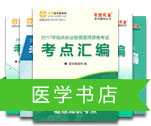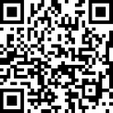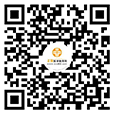| Night SweatsMark Bajorek | 盗汗马克.巴杰瑞克 |
| Night sweats are drenching sweats that require a change of bedding. | 盗汗为淋透性出汗,需换床单。 |
| I. Approach. The first priority is to exclude night sweats caused by fever. Sweating associated with fever is a separate evaluation. Before the 20th century, night sweats implied infection with tuberculosis. Now, many other ailments are associated with this symptom. Night sweats are often the mark of a known condition such as diabetes (especially with nocturnal hypoglycemia), cancer, head trauma, and rheumatologic disorders. Night sweats can also be a symptom of a new disorder. The investigation of a patient reporting night sweats requires a review of past illnesses and new symptoms. | I. 诊断。首先要排除发烧引起的出汗。发烧性出汗应另行诊断。20世纪前,盗汗通常提示有结核菌感染。现在,其他很多不适都与此症状相关。盗汗通常是某已知病症的标志,如糖尿病(特别是伴夜间低血糖者)、癌症、头外伤和各种风湿病。盗汗也可能是新的疾病的一种症状,在给盗汗报告病人进行检查时,需检查既往病史及新的症状。 |
| II. History. Night sweats can be characterized by determining onset, frequency, exacerbations, and remissions of symptoms. Question patients about the current state of known disorders. Excessive sweating is associated with poor nocturnal glycemic control. Flares of rheumatologic disorders (rheumatoid arthritis, lupus, juvenile rheumatoid arthritis, and temporal arteritis) cause sweating too. Pregnancy temporarily changes the intrinsic thermostat in many women who perspire excessively. Patients who are immuno-compromised are at increased risk for infections, especially with atypical agents. Patients with a history of substance abuse need to be asked about needle use and contaminants. | II. 病史。盗汗可通过确认发作时间、次数、加剧及症状消退加以确定。询问病人已知疾病。多汗也与夜间血糖控制不良有关。风湿性疾病(如类风湿关节炎、狼疮、幼儿性类风湿性关节炎、颞关节炎等)也导致出汗,妇娠也会暂时的改变很多妇女的体温状况,导致出汗过多。免疫代偿病人感染风险增加,特别是非典型性病原体感染。有药物滥用史病人需询问其针头使用及其他接触状况。 |
| A. Review of systems. Other symptoms that can accompany night sweats include flushing (carcinoid syndrome, pheochromocytoma), joint pain, sleep apnea, menstrual irregularities, reflux, cough, headache, dysuria, dyspnea, rashes, fatigue, palpitations, and weight and bowel habit changes. | A. 系统检查。伴随盗汗的其他症状包括潮红(类癌综合症、嗜铬细胞瘤)、关节痛、睡眠性呼吸暂停、月经不调、反流、咳嗽、头痛、排尿困难、睡眠困难、皮疹、疲乏、心悸及体重与排便习惯改变。 |
| B. Exposure factors. Inquire about recent immunizations or new medicines such as antidepressants, cholinergics, meperidine, estrogen inhibitors, gonadotropin inhibitors, niacin, steroids, stimulants, over-the-counter preparations, antipyretics, and naturopathic therapies. Question patients about exposure to sexually transmitted diseases (STDs), human immuno-deficiency virus (HIV), hepatitis, tuberculosis, or occupational and travel-related exposures. Also ask about increases in general changes in the ambient night temperature. | B. 暴露因素。询问最近免疫及新药使用情况,如抗抑郁剂、胆碱能药、哌替定、雌激素抑制剂、促性腺激素抑制剂、烟酸、类固醇、兴奋剂、非处方制剂、解热剂和自然疗法。询问病人有无接触性传染病(STD)、HIV、肝炎、结核病,有否职业性及旅游相关性接触。也应询问周围夜间体温总体变化增多情况。 |
| C. Psychological factors. Anxiety, nightmares, and psychoactive preparations can precipitate night sweats in healthy individuals. | C. 精神因素。焦虑、噩梦及兴奋剂可导致健康个体盗汗。 |
| D. Family history. Patients who report a family history of hereditary disorders and possible malignancies should have appropriate screening. | D. 家庭史。有遗传疾病及可能的恶性肿瘤家庭史病人应进行适当的筛检。 |
| III. Physical examination. The physical examination should address the pertinent positives noted in the patient's medical history. Note the patient's weight and temperature. Examination of the head, eyes, ears, nose, and throat (HEENT) should focus on common types of infection: sinusitis, pharyngitis, and otitis. A thorough examination of lymph nodes is helpful to identify infection or lymphatic abnormalities. The cardiopulmonary examination can also signal infection, valvular disease, and stimulant use. Patients should be examined for abscesses, skin ulcers, septic joints, phlebitis, and osteomyelitis. | III. 身体检查。身体检查应针对病人医疗史中的相关阳性记录。注意病人体重体温。头、眼、耳、鼻及喉检查的重点是普通类型的感染:鼻窦炎、喉炎和耳炎。淋巴结彻底检查有助于确认感染及淋巴病变。心肺检查也可提示感染、辨膜疾病及兴奋剂使用情况。应检查病人是否有脓肿、皮肤溃疡、关节脓肿、静膜炎和骨髓炎。 |
| IV. Testing | IV. 检验。 |
| A. Clinical laboratory testing. For patients with a known condition, testing for exacerbations is appropriate: erythrocyte sedimentation rate (infection, osteomyelitis, and temporal arteritis), C-reactive protein (rheumatologic disorders), and hemoglobin AiC (diabetes mellitus). Depending on the patient's symptoms or exposures, other appropriate tests can include purified protein derivative skin test for tuberculosis, free T4 level to rule out thyrotoxicosis, complete blood count with differential (infection), and follicle-stimulating hormone to investigate the possibility of menopause. Special tests may be required of patients with travel-related or STD exposures. | A. 临床实验室检查。对有已知病症病人,应检测病症是否加剧:血沉(感染、骨髓炎和颞关节炎)、C反应蛋白(风湿性疾病)和血红蛋白AIC(糖尿病)。根据病人症状及暴露情况决定是否进行其他检查,包括结合病纯蛋白衍生物皮肤测试、排除甲状腺机能亢进的游离T4水平检验、全血计数及分类(感染)、促卵泡激素检查停经可能性。有旅游相关及STD接触病人可能需要进行特种检验。 |
| B. Imaging. Chest x-ray studies are useful in the evaluation of night sweats in patients with a smoking history, industrial exposure, or a cough. These patients need to be screened for occult malignancy. Computed tomography scans are generally not appropriate unless other signs or symptoms dictate further evaluation. | B. 影像检查。胸部X线检查对评估有下列情况病人的盗汗很有用:吸烟史、工业性接触或咳嗽。这些病人需要进行潜在恶性肿瘤筛检。CT扫描通常并不合适,除非其他症状或体征提示要作进一步检查。 |
| V. Diagnostic assessment. Night sweating as a single entity is not worrisome. | V. 诊断评估。盗汗作为单一征状并不令人担心。 |
| Explore the likelihood of exacerbation of known conditions or the onset of a new disease process. The history is the most helpful part of the patient encounter. A new medication, with perspiration as a side effect, is the culprit. Patients may need cessation of the medication as well as a washout period. Night sweats might be an early symptom of a developing illness so watchful waiting is useful. Patients need to be instructed to watch for weight changes, fevers, and sleep and mood changes. Patients can complete a symptom diary, which is very helpful to the clinician in determining the need for additional evaluation. Consider illnesses that tend to be present in the patient's age group. Screening for common malignancies through mammograms, pap smears, and fecal occult blood testing is appropriate health maintenance as well as often being a part of the evaluation of the presenting complaint of night sweats. | 检查已知疾病加剧可能性或所得疾病过程的发作情况。病史在病人疾病中最有帮助。有出汗副作用的新药常常是盗汗的魁首。病人可能需要停药及给予一段药物清除时间。盗汗也可能是某种疾病发展的早期症状,因此观察等待是有用的。应指导病人留意体重变化、发烧及睡眠和情绪变化。病人可填写一份症状日誌,它对临床医师确定是否作进一步检查很有帮助。考虑该病人年龄组常见的疾病。通过乳房X线、巴氏涂片及粪便潜血试验筛检常见恶性肿瘤,既适于健康维持,也是当前盗汗主诉检查的内容之一。 |















 扫一扫立即下载
扫一扫立即下载


